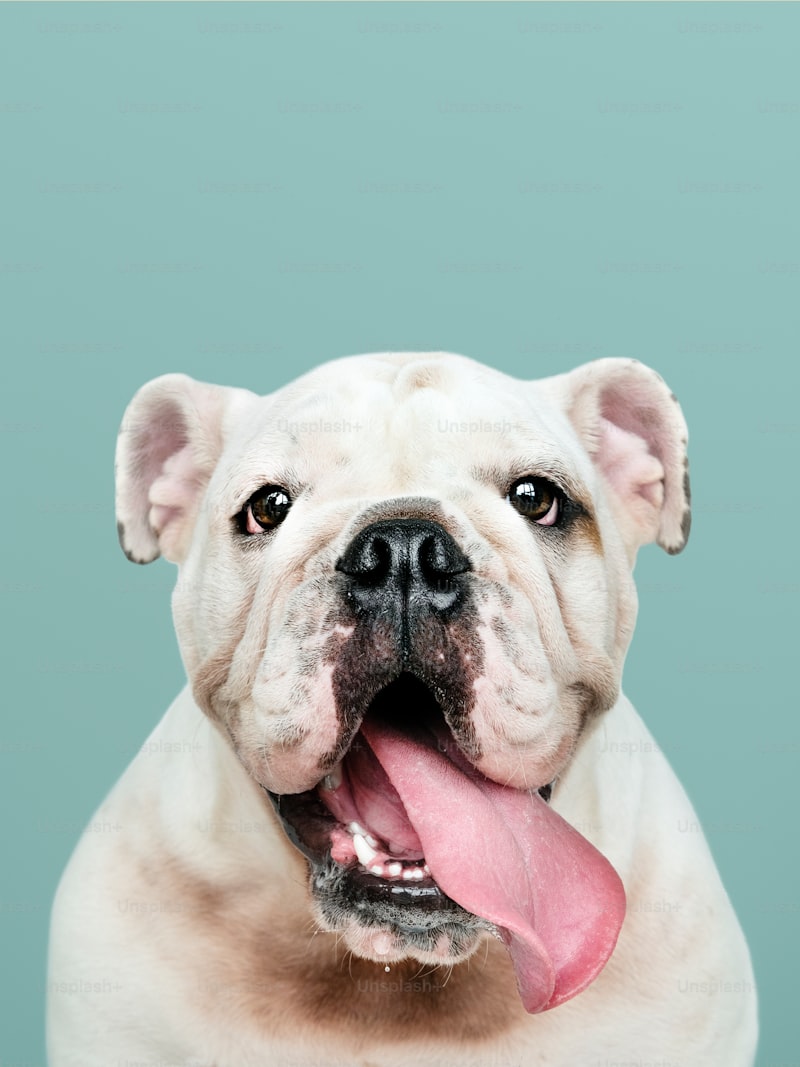First off, pay attention to the skin. If your dog is pawing at their ears or nibbling at their paws, it could indicate an allergic reaction. Imagine how itchy you’d feel if your skin was constantly irritated—you’d want to scratch, too! Allergies can cause redness, swelling, or even hot spots, which are painful spots on your dog’s skin that need immediate attention.
Next, take a look at their eyes. Watery, swollen, or red eyes can be another clue. It’s almost like your dog turned into a sad puppy from a cartoon, complete with big, teary eyes. This is often accompanied by some sneezing or nasal discharge, similar to how we react to pollen in the air.
Lastly, watch their diet. Sometimes allergies come from what they eat. If your dog is experiencing stomach issues like vomiting or diarrhea, it might be due to certain ingredients in their food. Think of it as an inner rebellion; their body simply doesn’t agree with what’s on the menu.
In essence, being vigilant about these signs can play a vital role in your dog’s well-being. Next time you see your pooch acting a bit off, remember that they might just be trying to tell you something important. So, keep your eyes peeled and trust your instincts—your furry friend is counting on you!
Is Your Dog Sneezing? Key Signs That Could Indicate Allergies

If your pup is sneezing more than usual, it’s time to look for other signs. Is there excessive itching or scratching? A dog with allergies might act like they’re auditioning for an itch-and-scratch competition! Watch out for those watery eyes, too – they can be a telltale sign that something’s bothering your pooch. And let’s not forget about that adorable, but possibly concerning, habit of paw licking. If your dog’s paws are more like a wet sponge than usual, it could indicate they’re reacting to something in their environment.
Have you noticed your dog shaking their head often? This could be another red flag. It’s like they’re trying to shake off something annoying, and what’s more annoying than allergies? Then there’s the occasional change in appetite. If your pup suddenly decides they’re on a hunger strike, allergies might be playing a sneaky role in their refusal to eat.
From Itchy Skin to Runny Eyes: Recognizing Common Allergies in Dogs
Imagine your dog frolicking in the grass, only to come home scratching like a record stuck on repeat. Allergies can stem from various sources—pollen, dust mites, or even certain foods. Just think of it as your pup’s immune system going off the rails, mistaking harmless stuff for something sinister. It’s like inviting friends over for a party, and then your dog barks at the balloons, thinking they’re intruders!
But wait, there’s more! If your dog’s nose is running like a leaky faucet or they’re sneezing more than usual, it’s time to investigate. Dogs can develop environmental allergies to dust, mold, or even the food they eat. A simple change in diet can sometimes clear up those watery eyes and itchy skin. It’s like switching out your old shoes for a comfy new pair; suddenly everything feels better.
Recognizing these signs early can save your pup a whole lot of discomfort. Watching for excessive itching, skin rashes, or changes in behavior can provide clues to what’s bothering them. It’s a bit like putting on detective hats—your mission: to discover the culprit behind your dog’s sneezing and scratching. Who knew being a pet parent required such keen observation skills? So, the next time your furry friend shows signs of allergies, you’ll know exactly where to start!
Behind the Scratch: Essential Tips to Identify Allergies in Your Pooch
First off, pay close attention to the symptoms. Is your pup constantly sneezing, licking their paws, or sporting red, irritated skin? Think of it like a detective story—each sign is a clue leading you to the source of discomfort. Take notes on when the scratching occurs. Is it after a walk in the park or following their dinner time? Sometimes, pinpointing the timing can help you figure out if the allergen is environmental, dietary, or even something elusive like flea bites.

Next, food allergies are more common than you might think. If your dog’s scratching has ramped up lately, consider changing their diet. You could try an elimination diet, slowly removing common allergens like chicken or grains, to see if their itching subsides. It’s like giving their tummy a fresh start!
Additionally, don’t forget to check your home environment. Pollen, dust mites, and even mold can be itchy irritants. Think about investing in air purifiers or keeping your home tidy to reduce allergens. Treat your house like a safe haven for your pup—where they can roll around without worrying about surprise sneezes!
Lastly, seeking help from a vet is crucial. They can run tests to confirm if allergies are to blame, suggesting treatments that can bring your dog the comfort they deserve. Remember, keeping your pooch happy and healthy is the ultimate goal!
Spotting the Symptoms: How to Unmask Your Dog’s Allergies
First off, have you noticed your pooch constantly scratching or licking certain areas? That’s your first red flag. Dogs don’t scratch just for fun; it’s often a sign of irritation, which can stem from allergies. Look closer—dogs might develop rashes or have inflamed skin, leading to fur loss. Just like humans can have allergic reactions, your dog may break out in hives or have irritated spots that resemble a pesky rash.
Next, consider the sniffles. If your dog sounds like they’ve got a cold, it might be more than just a seasonal sniffle. Nasal discharge or sneezing could hint at environmental allergies, like pollen or dust mites. Their watery eyes might just add to the picture, all while those soulful eyes are pleading for your help.
Also, pay attention to their ears. If they’re shaking their head or scratching, it could indicate ear infections often triggered by allergies. It’s like trying to ignore a persistent itch—your dog just can’t! And let’s not forget about the digestive side. If your pup experiences odd gastrointestinal issues, like vomiting or upset stomachs after meals, food allergies could be the culprit.
So, how do you piece together this puzzle? Keeping a daily journal of your dog’s behavior, diet, and environment can help you identify patterns. This way, you can chat with your vet about your findings, making it easier to pinpoint solutions. In the world of dog allergies, being proactive is the key to keeping your furry friend happy and healthy!






